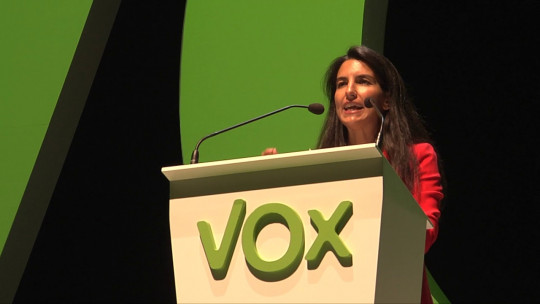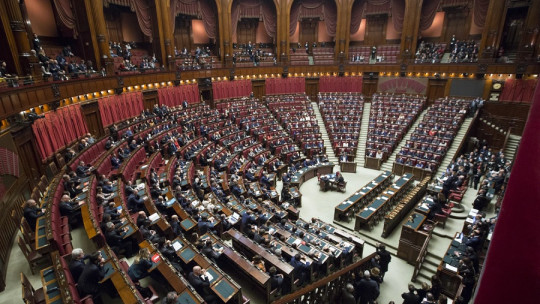
People have different opinions and beliefs, nothing new. Our political ideology can make us see the way a news program or a social media account informs us in a better or worse light.
If a media gives us news that contradicts our belief system, it is quite likely that we change media or relativize what it tells us, that is, we select the type of exposure we want to receive.
But we not only select the information we want to receive, but we also select the information we want to say, even if we have little certainty that it is true. This phenomenon has been called selective communication and has recently been addressed experimentally. Let’s look at it further.
What is selective communication?
Selective communication is a cognitive bias that It consists of people being less likely to share certain information that contradicts our beliefs and attitudes, especially those that have to do with our political ideology or militancy, even if we believe that information contrary to our opinion or belief is true. That is, we are more likely to communicate data that is not objective but that coincides with how we think rather than sharing truthful information that is contrary to our opinion.
This phenomenon has begun to be addressed experimentally relatively recently, and among those who have studied it we have researchers Pierce Ekstrom and Calvin K. Lai. Both authors indicate that, for a long time, the focus of attention has been on how our political opinions and our political affiliation towards a political group causes a bias in the way we treat information.
It was already known that people are very selective when they receive information, whether they read, listen to or see it and, consequently, believe it. This specific phenomenon is called selective exposure and consists of the tendency of people to expose themselves to information, opinions or media that are ideologically related or that offer a way of giving news and data that is pleasant, while it does not represent a clash between the way you see the world and the way new information is presented to you.
Selective exposure and selective communication would be two sides of the same coin While selective exposure implies that the person selects the information they want to receive, thus reinforcing their pre-existing points of view and avoiding those that contradict their opinion, selective communication involves saying what is in tune with their way of seeing. things. In one phenomenon the message we receive is selected and in the other the message we emit.
Selective communication is a very interesting phenomenon because it shows how people are biased not only when it comes to receiving information, but also when we transmit it to others. Even though we are people who perceive reality very clearly, without any cognitive bias (which is practically impossible) When we communicate “facts” we cannot avoid presenting inaccurate or distorted versions of reality
Relationship of this phenomenon with politics
Pierce Ekstrom and Calvin K. Lai have conducted four studies with a total sample of 2,293, participants who identified themselves as liberals and conservatives. The experiment consisted of presenting them with the positive and negative effects of two new political measures: the increase in the minimum wage and the ban on assault weapons.
After having read a positive effect and a negative effect associated with each of the two policies, participants were asked if they really believed that there was a relationship between those two policies and the effects they had been told. In addition to that, they were asked if they believed they were more or less likely to communicate those findings or relationships themselves to a loved one, friend, or family member.
As expected there was differences between liberal and conservative participants Liberals were more likely to believe in the positive effects of raising the minimum wage and banning assault weapons, while conservatives were more likely to believe in the negative effects of both measures.
According to the researchers and in line with the data found by their own research, when ideology, militancy or political opinion is at stake, it is difficult to persuade people to believe in political facts that are uncomfortable to them, no matter how uncomfortable they are. certain and objective as they are. If a person is presented with information that is inconsistent or contrary to their ideology, identity or aptitudes, it does not matter whether it is an objective fact, the person will not want to believe it nor will they be sensitive to it
But in addition to this, the researchers found that participants were more likely to focus on and communicate information that supported their political ideology, even if that data was not at all reliable. In fact, this selective communication of information favorable to their political views occurred regardless of whether participants believed the facts they were conveying were accurate or not. In other words, they might well think that what they were saying was dubious and still communicate it to other people.
What this effect demonstrates is that, even if we manage to successfully persuade someone that their point of view is poorly founded or “incorrect”, this is no guarantee that the person will not continue to communicate to those closest to them. “facts” that continue to give strength to your particular way of thinking. That is to say, We can give you true data and that person will continue transmitting the false ones
Selective exposure and communication and Fake News
With the emergence of the Internet and social networks, the transmission of false news or “Fake News” has become a reality and topical issue. Although the most traditional media, such as newspapers, television or radio, are not free of political ideology, the Internet has served as a platform for anyone without any journalism studies to share their opinions and ideology to millions of people. .
Based on the theory of selective exposure, people tend to look for media that is similar to our way of thinking, with the Internet being that place where it is quite likely that we will find one that is very close to how we think. This should not surprise us since the Internet is so immense that we can practically find any blog, YouTube channel, Twitter page or online newspaper of any of the political ideologies that we can imagine.
This fact has its good things and its bad things. The main advantage is that we can find a world much more diverse in opinions and facts than those offered by television channels or long-running newspapers, allowing us to learn about events that very rarely appear on a television news program or on the front page of a newspaper. However, it has a very big disadvantage, directly related to the bias of selective exposure and selective communication.
Although it is true that many people prefer to follow profiles of different ideologies on social networks and thus have a broader perspective, the reality is that many people choose to only follow accounts similar to their way of thinking. These same accounts fall into the bias of selective communication, only transmitting the information that best suits them. In turn, their followers only share their content and the followers of those followers see that information and, thus, an endless chain of shares can begin.
In an ideal world, regardless of its ideology, all media would transmit truthful, honest and real information, something that is nothing more than a utopia. If the classic media can already share unreliable news, let’s not talk about the accounts on social networks and other large platforms that are controlled by people more motivated by their own political ideology than by their desire to inform. It is not difficult to imagine that on these accounts you can very easily share a hoax, fake news that, despite being a lie, is liked by the followers of that account.
Thus, both selective exposure and selective communication are two biases highly involved in the transmission of Fake News, especially on social networks. The Internet has helped people expose themselves to only media that is very similar to their way of thinking, and in turn, these people only share information that they agree with, regardless of whether they believe it to be true or not, which which contributes to false information being widely transmitted throughout the population.
Luckily, understanding that human beings are victims of bias can help us avoid this type of news. Instead of following only one media outlet or media outlets with the same ideological profile, It is advisable to follow people with different opinions This will not prevent us from wanting to believe one or another news of dubious reliability but, at least, it will allow us to have a broader perspective of what is happening in this world and, consequently, a more informed and objective vision.








